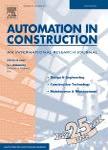版权所有:内蒙古大学图书馆 技术提供:维普资讯• 智图
内蒙古自治区呼和浩特市赛罕区大学西街235号 邮编: 010021

作者机构:Natl Engn Res Ctr High Speed Railway Construct Tec Changsha 410075 Peoples R China Tsinghua Univ Dept Civil Engn Beijing 100084 Peoples R China
出 版 物:《AUTOMATION IN CONSTRUCTION》 (建造自动化)
年 卷 期:2024年第160卷
核心收录:
学科分类:08[工学] 0813[工学-建筑学] 0814[工学-土木工程]
基 金:Open Foundation of National Engineering Research Center of High-speed Railway Construction Technology [HSR202201] Tsinghua University Initiative Scientific Research Program National Natural Science Foundation of China
主 题:Structural health monitoring Video processing Compressive sensing Model-informed deep learning
摘 要:Long-term structural health monitoring (SHM) using vision -based methods may encounter challenges of data storage, low -sampling resolution, and data loss. Compressive sensing (CS) offers the possibility for alleviating these problems, by using less than half of the complete signal to recover the signal based on the sparsity. This paper proposed a model -informed deep learning -based CS method, named variable splitting scalable convolutional neural network (VSSNet). VSSNet includes a single block sampling convolution network, plus a hierarchical recovery network that contains one base layer (BL) and multiple enhancement layers (ELs). In each BL and EL, different data loss problems are solved using the variable splitting recovery network, by integrating optimization theories with deep learning -based CS methods. Then recoveries are refined by initial and deep recovery networks. Additionally, the greedy technique is used to select important sample bases, enabling resampling and recovery at different sampling rates using one model. The superiority of VSSNet was demonstrated through static and dynamic examples, showcasing its high accuracy and robustness in image recovery, structural motion estimation, and structural modal identification.